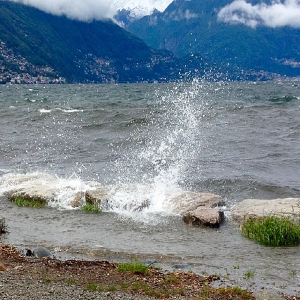Building a local reference library for metabarcoding survey of lake macrobenthos: oligochaetes and chironomids from Lake Maggiore

Accepted: 30 January 2023
PDF: 0
PDF: 161
DOC: 0
DOC: 0
HTML: 10
All claims expressed in this article are solely those of the authors and do not necessarily represent those of their affiliated organizations, or those of the publisher, the editors and the reviewers. Any product that may be evaluated in this article or claim that may be made by its manufacturer is not guaranteed or endorsed by the publisher.
Authors
This study represents a first reference database of genetic diversity of macroinvertebrates for a barcoding marker for Lake Maggiore, focusing on the two dominant groups of the littoral benthic fauna (chironomids and oligochaetes), commonly used for biological monitoring of freshwater lakes. Sediment samples were sorted at the stereomicroscope and single animals were cut in two pieces, one piece to be used for morphological identification and one piece for DNA extraction. This study allowed us to collect and identify 427 organisms: 309 oligochaetes belonging to 27 identifiable taxa and 118 chironomid larvae belonging to 26 identifiable taxa. Four families of oligochaetes: Naididae, Lumbricidae, Lumbriculidae, and Enchytraeidae and five subfamilies of Chironomidae: Chironominae, Tanypodinae, Orthocladiinae, Diamesinae, and Prodiamesinae were found. The extraction and amplification of the DNA covered a total of 10 oligochaete taxa. For 7 of them (Ophidonais serpentina, Uncinais uncinata, Vejdovskyella intermedia, Psammoryctides barbatus, Limnodrilus hoffmeisteri, Tubifex tubifex, and Bothrioneurum vejdovskyanum), we found other sequences in GenBank to compare genetic similarities with available data. For the other taxa (Lumbriculidae, and Enchytraeidae, and Nais sp.) no best hits were found in GenBank. The extraction and amplification of the DNA covered a total of 21 chironomid taxa. For ten species (Cladotanytarsus mancus, Cladotanytarsus atridorsum, Polypedilum scalaenum, Polypedilum nubeculosum, Benthalia carbonaria, Phaenopsectra flavipes, Clinotanypus nervosus, Paracladopelma laminatum, Cryptochironomus rostratus and Parakiefferiella finnmarkica) sequences were available in GenBank to compare genetic similarities. For the other taxa (Cryptochironomus sp., Demicryptochironomus vulneratus, Chironomus sp., Stictochironomus sp., Orthocladius sp., Cricotopus sp., Eukiefferiella sp., Procladius sp., Diamesa sp., Potthastia sp., and Monodiamesa bathyphila) no best hits were found in GenBank. For chironomids, DNA taxonomy revealed the existence of several species complexes. Covering more populations and more genetic markers for those taxa within a rationale of integrative taxonomy could solve the taxonomic problems and provide a reliable description of diversity.
How to Cite

This work is licensed under a Creative Commons Attribution-NonCommercial 4.0 International License.
PAGEPress has chosen to apply the Creative Commons Attribution NonCommercial 4.0 International License (CC BY-NC 4.0) to all manuscripts to be published.


 https://doi.org/10.4081/aiol.2022.11051
https://doi.org/10.4081/aiol.2022.11051



